 |
|
CRS-14 (Falcon 9) 2 April 2018 |
Space Launch Complex 40 Cape Canaveral Air Force Station |
A SpaceX Falcon 9 rocket lifted off on the CRS-14 commercial resupply mission to the International Space Station at 4:30 p.m. on 2 April 2018 from Space Launch Complex 40 at Cape Canaveral Air Force Station. Excerpts about the mission from the SpaceX press release: SpaceX is targeting Monday, April 2, 2018 for an instantaneous launch of its fourteenth Commercial Resupply Services mission (CRS-14) at 4:30 p.m. EDT, or 20:30 UTC, from Space Launch Complex 40 (SLC-40) at Cape Canaveral Air Force Station, Florida. [The] Dragon [spacecraft] will separate from Falcon 9's second stage about 10 minutes after liftoff and attach to the space station on Wednesday, April 4, 2018. Both Falcon 9 and the Dragon spacecraft for the CRS-14 mission are flight proven. Falcon 9's first stage previously supported the CRS-12 mission in August 2017 and Dragon previously supported the CRS-8 mission in April 2016. SpaceX will not attempt to recover Falcon 9's first stage after launch. On Wednesday, April 4 International Space Station crew members will use the station's 57.7-foot (17.6- meter) robotic arm to reach out and capture the Dragon spacecraft and attach it to the orbiting laboratory. Dragon will return to Earth with more than 3,900 pounds of cargo after an approximately one-month stay at the International Space Station. About five hours after Dragon leaves the space station, it will conduct its deorbit burn, which lasts up to 10 minutes. It takes about 30 minutes for Dragon to reenter the Earth's atmosphere and splash down in the Pacific Ocean off the coast of Baja California. |
|
 |
|
The Falcon 9 rocket vents gaseous oxygen during fuel loading at SLC-40. The rest of the images show liftoff through to when the rocket disappeared from sight behind the clouds. |
|
 |
|
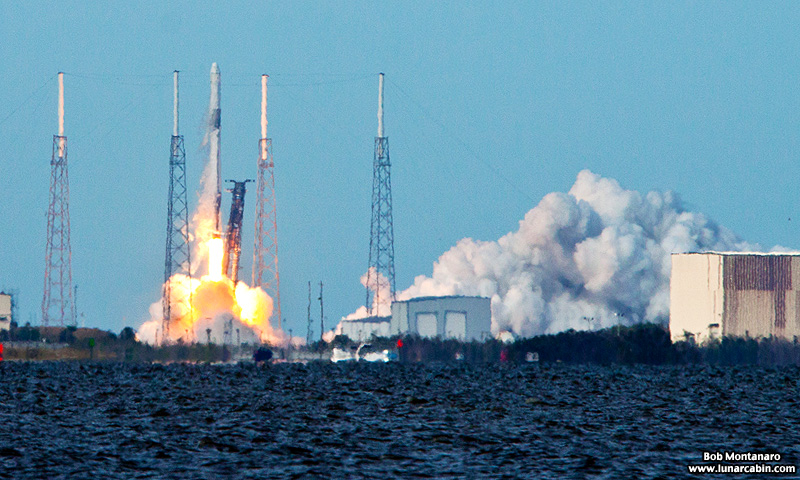 |
|
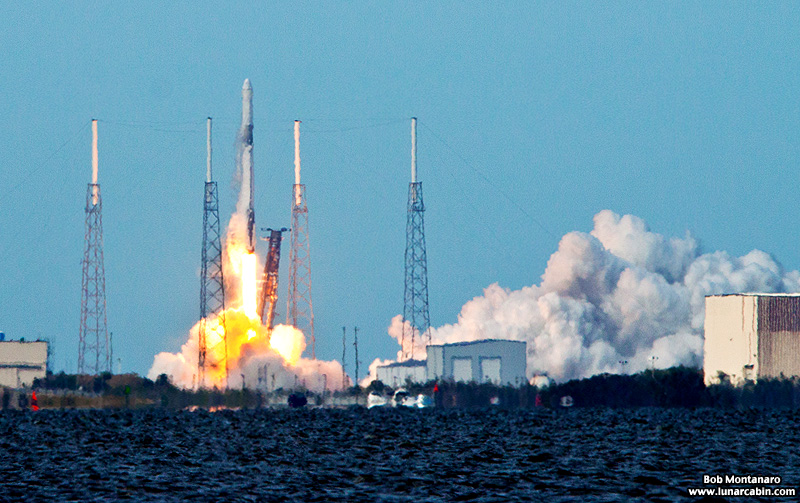 |
|
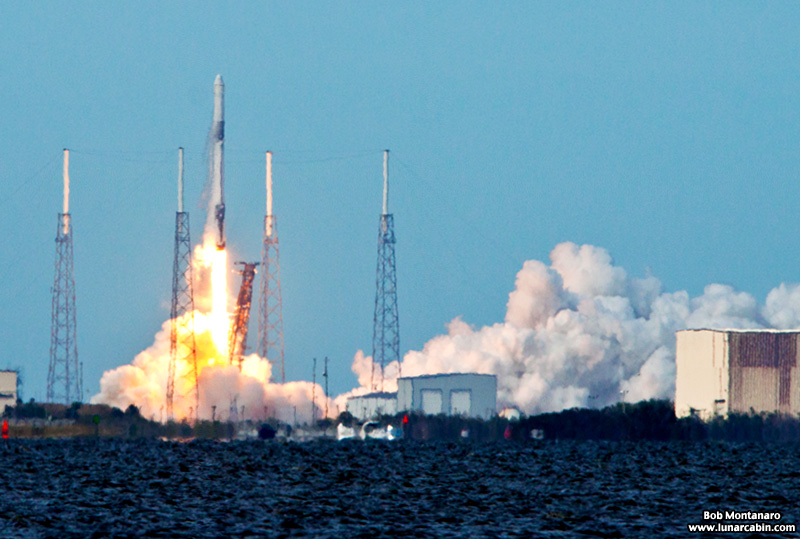 |
|
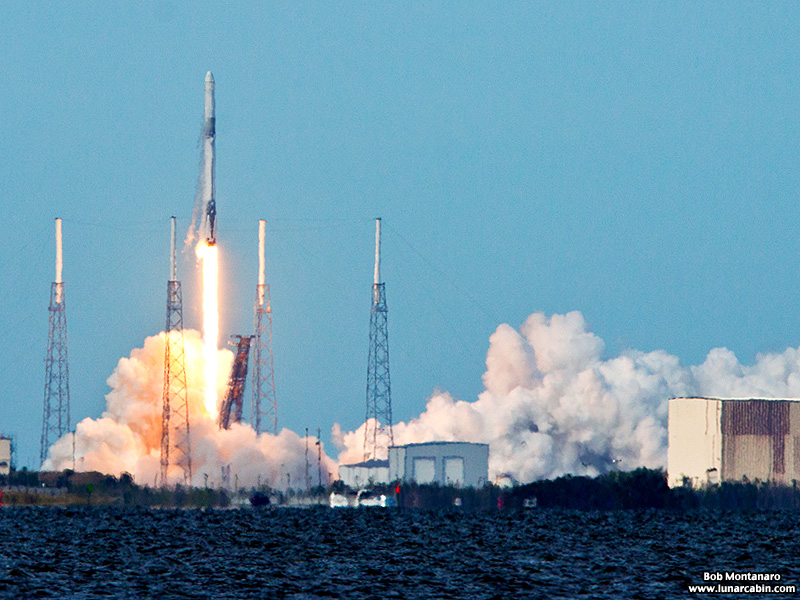 |
|
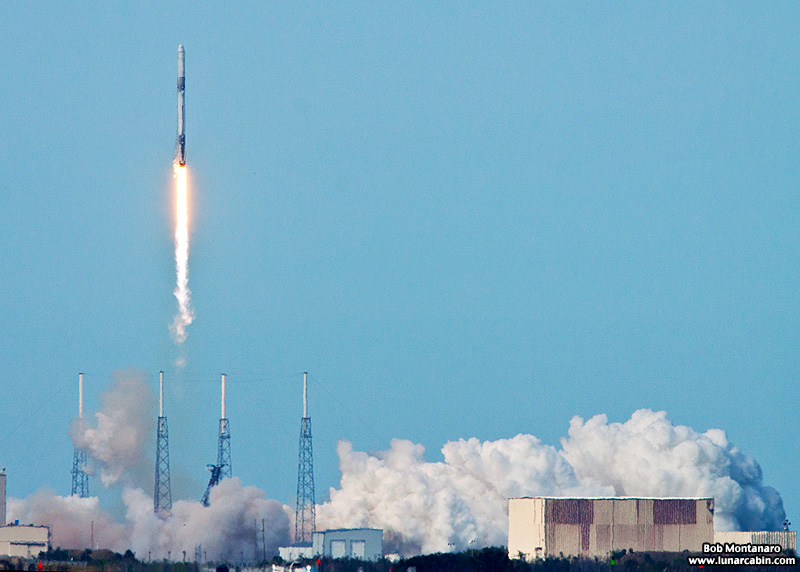 |
|
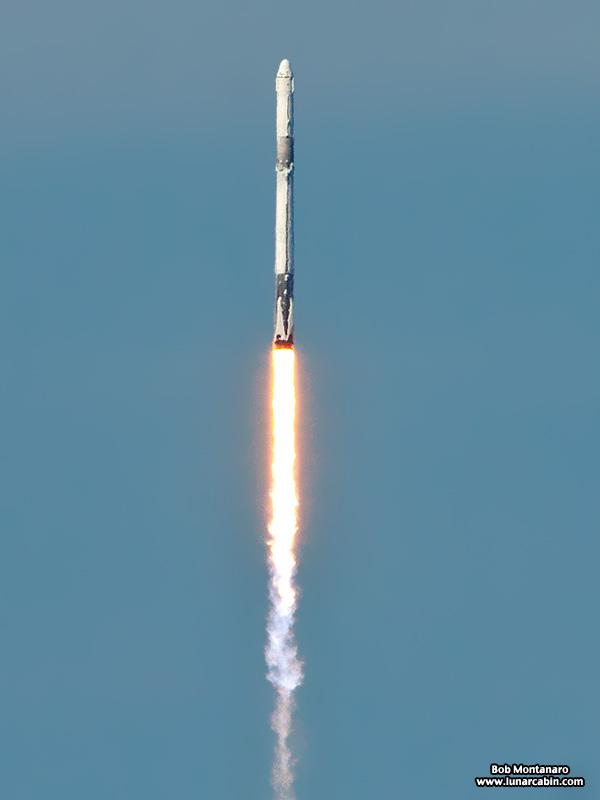 |
|
| Note the dark soot still on the first stage booster from its first flight. SpaceX does not believe it is worth the time or the effort to clean the soot off. The first stage booster also sports landing legs for its simulated landing in the ocean being carried out for training and experimental engineering purposes. As stated in the press release, the booster was not recovered. | |
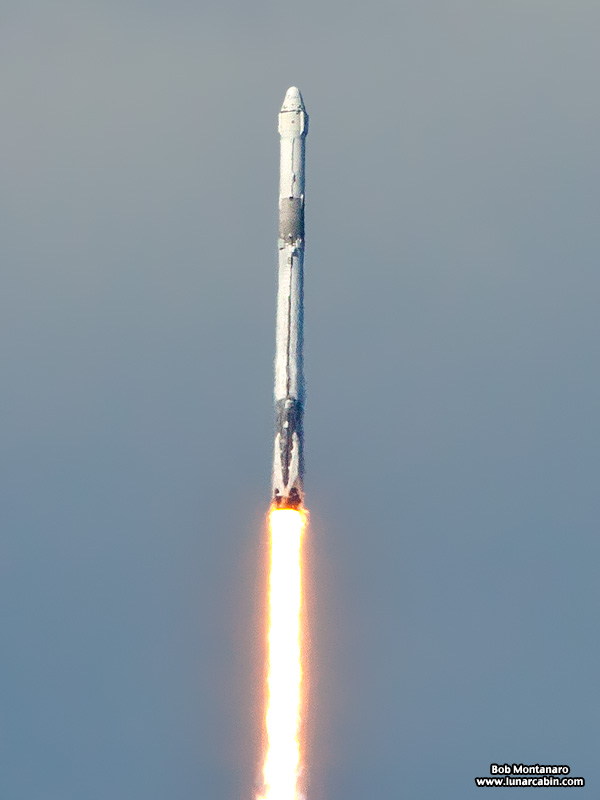 |
|
 |
|
 |
|
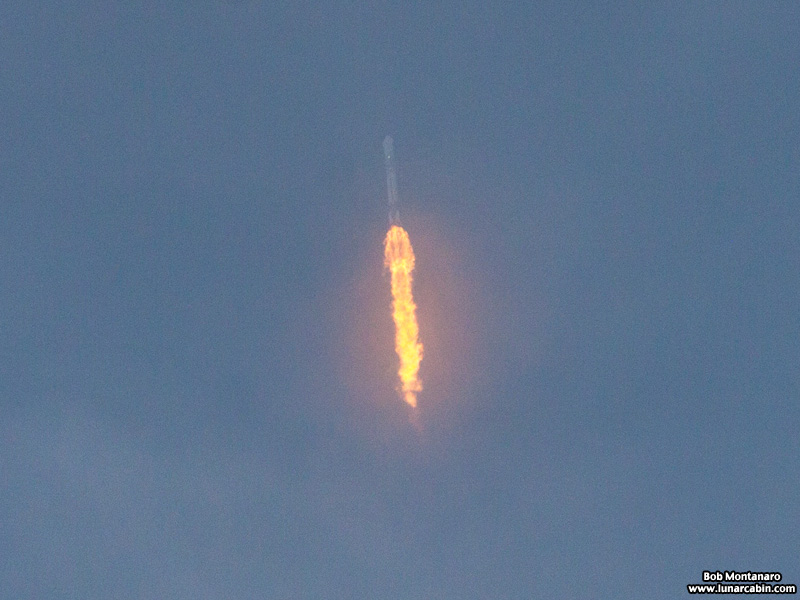 |
|
Moments later the rocket was lost from sight behind the clouds. |
|
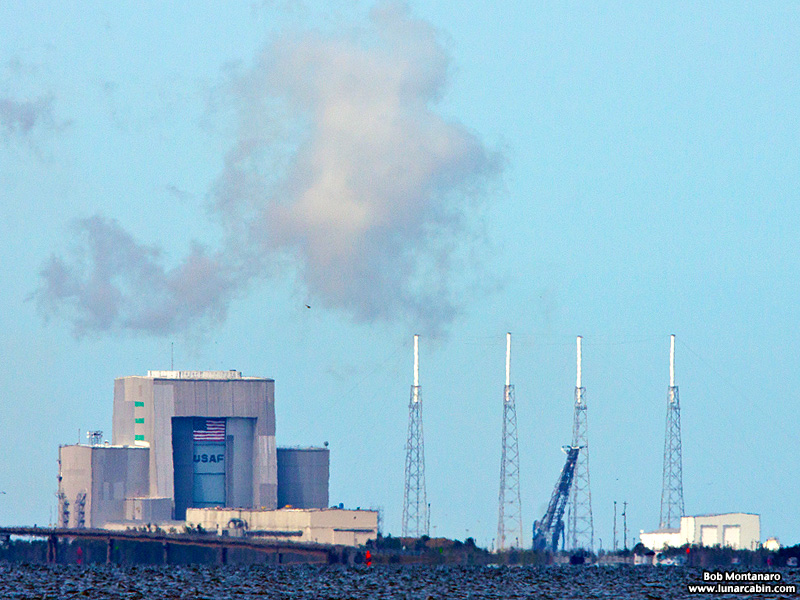 |
|
SLC-40 after the launch. |
|
All contents copyright Lunar Cabin |
|